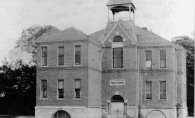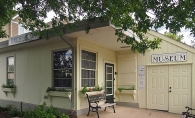While you’ve likely heard of the nine-time Grammy-winning singer Bonnie Raitt, what isn’t as public is that she started her blues career on Lake Minnetonka. An old summer camp on Enchanted Island made her feel at home because it reminded her of a camp in the Adirondack Mountains where she’d performed as a kid, much like Bob Dylan (then Zimmerman) did when he lugged along his guitar to a Jewish camp in Wisconsin.
Raitt hadn’t planned on being a blues musician, but in the early 1970s, after taking a semester off from college to play soulful folk around Boston, Warner Brothers offered her a contract. She accepted, and along with her brother Steve, Raitt hooked up with a who’s who of musicians from the West Bank of Minneapolis to record her 1971 debut album Bonnie Raitt.
Willie Murphy, who still plays piano regularly in town and calls himself “a cursed white guy who fell in love with black music as a kid,” produced the record, while his band, Willie and the Bees, provided the backup music.
“Bonnie asked me to produce the record,” Murphy says. “She was a fan of me and [John] Koerner’s [who engineered sound for the record] when we toured out in Boston. So I talked her into coming out to my little hippie pad to do the record.” To keep the rough, spontaneous feel of her shows, Raitt and Murphy wanted to avoid a slick, urban recording studio. “We’d look in the want ads and then drive around and look at these little places,” says Murphy. “We saw this ad for a defunct summer camp and loved it.”
Lake Minnetonka proved to be the perfect place for this seminal record at a “remedial reading summer camp,” as Raitt described it in a 2013 interview with The Current radio station. “It wasn’t Animal House, but it was very much like a summer camp. It was just a blast.”
The recording session turned into a weeks-long party as all the musicians bunked at the camp. “There were so many accommodations that we ended up all staying out there. A few musicians came up from Chicago, and would fish every day,” Murphy says. “It was a vacation for everybody. Finally after a couple of weeks there, [Raitt] asked, ‘Don’t you think we should start recording?’ ”
Even while the recording was happening, 40 to 50 people were coming and going from the camp, says Murphy. One was Julian West, who was babysitting the son of the sound engineers. He remembers the makeshift studio in a two-story barn/garage. “The tape recorder was upstairs and the musicians played downstairs, so they communicated to each other by a microphone and a disembodied voice. It was a little bit of a weird set-up.”
Even if the creative studio was inventive, the results of this live, four-track recording set Raitt’s career in motion. “A lot of people still think it’s her best record,” Murphy says. “I do think it stands up as one of the best records she’s ever made.”
Raitt also remembers it fondly. “I’m always reminiscing with Willie and the Bees when I get together with them,” she told The Current.
Raitt continued her Minnesota connections over the years, playing on A Prairie Home Companion in particular. In that same interview with The Current, she complimented the state’s focus on the arts, saying, “You guys have one of the most vital … wide-ranging but overlapping appreciative musical scenes... It’s Austin, New Orleans and Minneapolis/St. Paul that are the three cities that have been multi-racial in their music scenes for all this time. That’s why I wanted to make my first record there.”









